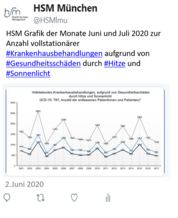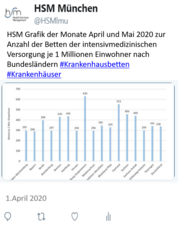Spatial distribution of avoidable cancer mortality in Germany.
| Autoren/Herausgeber: |
Sundmacher, L. Gaskins, M. Hofmann, K. Busse, R. |
|---|---|
| Erschienen: | 2012 |
| Publikationsart: | Articles in Refereed Journals (International) |
| ISBN/ISSN: | 0943-1853 |
| erschienen in: | Journal of Public Health |
| Weitere Quellenangabe: | Volume 20(3), Pages 279 - 288 |
Abstract
Aim
To investigate the spatial distribution of avoidable cancer mortality (ACM) rates in Germany and to identify small areas with exceptionally high rates using districts (Landkreise/Kreise and kreisfreie Städte) as a unit of analysis. Avoidable cancer mortality reflects deaths from cancer that should not occur in the presence of effective and timely health care.
Methods
Age-standardised, average ACM rates were calculated for the period from 2000 through 2004 for each of the 439 districts in Germany using unit-record mortality data. The spatial distribution of ACM was subsequently analysed using country maps, interval estimates and regression analysis. Data on mortality and age distribution were obtained from the German Federal Statistical Office (DESTATIS) and the Federal Office for Building and Regional Planning (INKAR).
Results
We found that in women under 70 years, the highest ACM rates were seen for cancer of the breast and for cancer of the trachea, bronchus and lung, whereas in men under 70 years, the highest ACM rates were seen for cancer of the trachea, bronchus and lung, and for cancer of the colon, rectosigmoid junction, rectum, anus and anal canal. The statistically lowest mean ACM rates could be found in the south of Germany for men and women. Although the mean ACM rates in men in former East Germany were significantly higher than elsewhere in the country, they were not substantially higher than those in the west and northwest. The mean ACM rates in women were even lower in the east than in the northwest and west.
Conclusion
The spatial distribution of ACM rates in women in Germany showed a north-south gradient rather than the east-west gradient that often appears or, for sociohistorical reasons, is even assumed in the German context. When applying measures of ACM, we suggest using districts with statistically lower ACM rates than the nationwide average as a benchmark for the maximum number of excess deaths that should be considered preventable, whether within the current German context or beyond.





